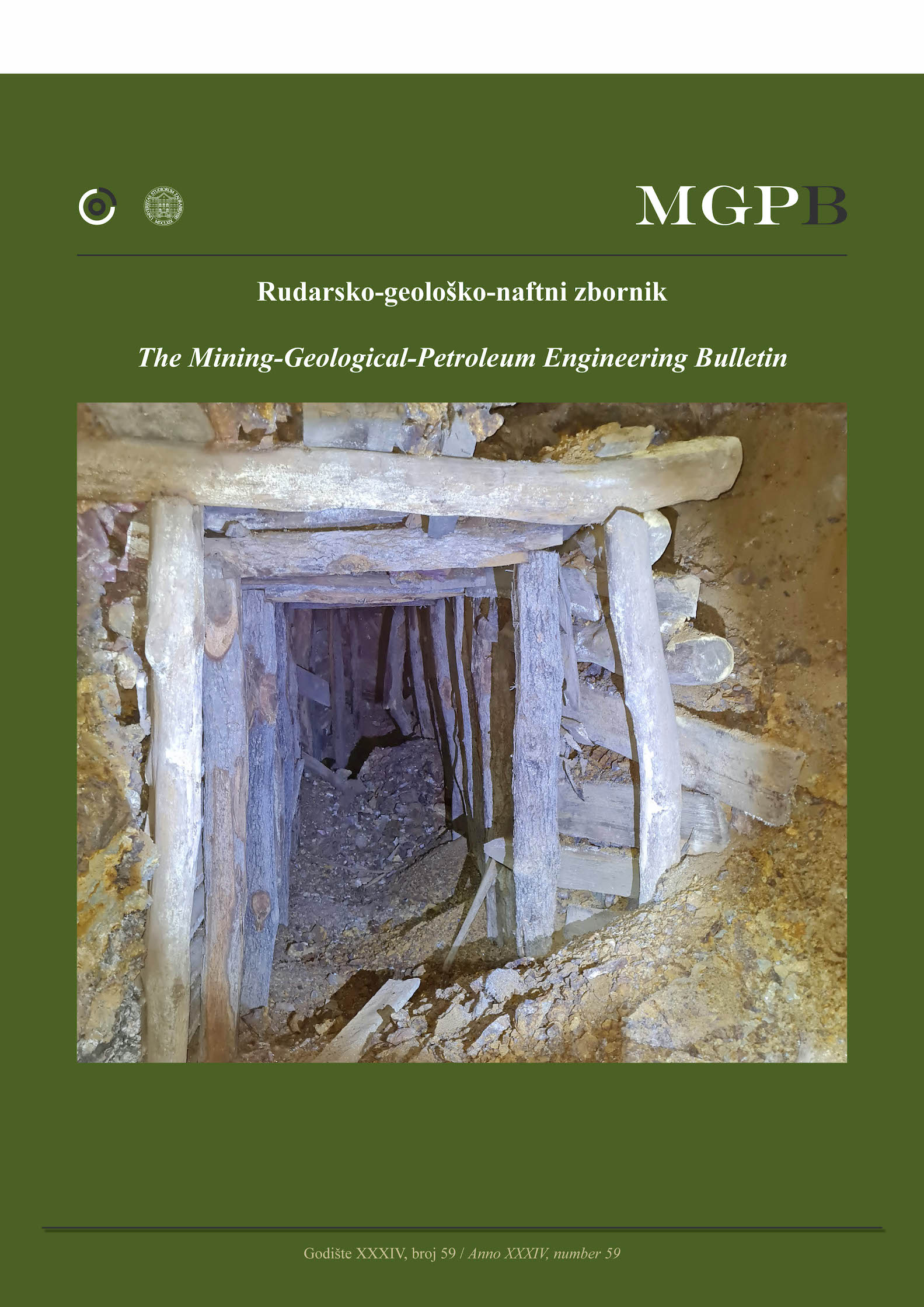Comparative investigation of glass waste grinding in various mills
DOI:
https://doi.org/10.17794/rgn.2022.3.3Keywords:
glass waste, recycling, grinding, ball mill, specific grinding workAbstract
The present work deals with systematic grinding investigation and determination of grindability of container glass bottles. The systematic grinding tests were carried out in three different kinds of ball mills (drum mill, vibrating mill, and planetary mill) with different energy intensities (low, medium, and high intensity) in dry conditions. In addition, the specific grinding work and specific surface area were determined in every case. The grindability test was performed by the Universal Hardgrove mill moreover, the Bond-Work Index was calculated from Hardgrove Grindability Index. In this research work, the focus was on analysing the grindability of container glass bottles and the goal was energy-efficient milling of glass waste to produce glass foam powder for further utilization (for example glass foam) in a sustainable way. Based on the obtained results, it can be concluded that the optimal milling apparatus for container glass grinding is the drum mill. The reason why is that it has low specific grinding work (151.52 kWh/t ) in comparison with the other two types of mills (3488.37 kWh/t of planetary mill and 1106.38 kWh/t of vibrating mill) resulting in relatively high specific surface area (11314 cm2/g). In the case of grinding industrial quantities of glass waste, the drum mill has a much higher capacity compared to the vibrating mill and the planetary mill.
Downloads
Published
How to Cite
Issue
Section
License
Copyright (c) 2022 authors and journal

This work is licensed under a Creative Commons Attribution 4.0 International License.
Creative Commons-BY
Authors who publish with this journal agree to the following terms:
In agreeing this form, you certify that:
- You read the ethical codex of the RGN zbornik available at journal web.
- You submitted work is your original work, and has not previously been published and does not include any form of plagiarism.
- You own copyright in the submitted work, and are therefore permitted to assign the licence to publish to RGN zbornik.
- Your submitted work contains no violation of any existing copyright or other third party right or any material of an obscene, libellous or otherwise unlawful nature.
- You have obtained permission for and acknowledged the source of any illustrations, diagrams or other material included in the work of which you are not the copyright owner.
- You have taken due care to ensure the accuracy of the work, and that, to the best of your knowledge, there are no false statements made within it.
- All co-authors of this submitted work are aware of, and in agreement with, the terms of this licence and that the submitted manuscript has been approved by these authors.
Publication licence
You retain copyright in your submitted work, according to journal license policy (CC-BY). By signing this form you agree that RGN zbornik may publish it under the publication licence. In summary the licence allows the following:
Anyone is free:
- To copy, distribute, display, and perform the work.
- To make derivative works.
Under the following conditions:
- The original author must always be given credit.
- The work may not be used for commercial purposes.
- If the work is altered, transformed, or built upon, the resulting work may only be distributed under a licence identical to this one.
Exceptions to the licence
In addition to publishing the work printed under the above licence, RGN zbornik will also enable the work to be visible online.
The journal editorial can change the licence rules anytime but it cannot retroactively restrict author(s) rights.


